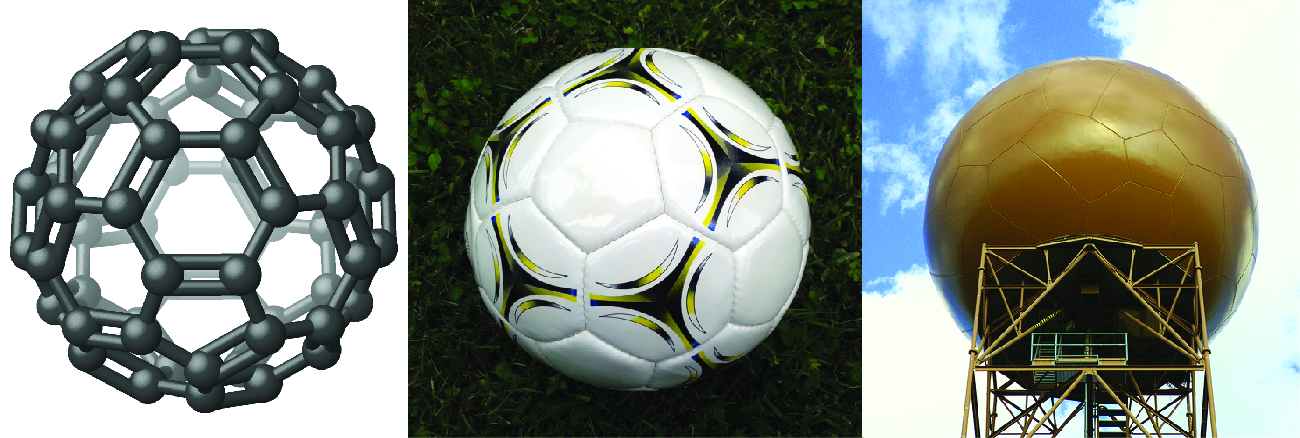Module 8: Chemical Bonding
Background
This module examines covalent bonding, which involves sharing electrons between non-metal elements. Organic chemistry and biochemistry study the molecules of life, most of which involve atoms covalently bonded to each other.
It has long been known that pure carbon occurs in different forms (allotropes) including graphite and diamonds. But it was not until 1985 that a new form of carbon was recognized: buckminsterfullerene, commonly known as a “buckyball.” This molecule was named after the architect and inventor R. Buckminster Fuller (1895–1983), whose signature architectural design was the geodesic dome, characterized by a lattice shell structure supporting a spherical surface. Experimental evidence revealed the formula, C60, and then scientists determined how 60 carbon atoms could form one symmetric, stable molecule. They were guided by bonding theory—the topic of this chapter—which explains how individual atoms connect to form more complex structures.

Learning Objectives for Chemical Bonding
- Apply the concept of electronegativity to characterize a bond as covalent, ionic, or polar covalent.
- Employ the octet rule to draw Lewis structures.
- Recognize common exceptions to the octet rule (including radicals) and appraise their impacts on structure and reactivity.
- Draw resonance structures and evaluate their relative contributions to the resonance hybrid using formal charges and the octet rule.
- Relate trends in atom size and bond order to rationalize and support observed bond lengths and strengths.
- Use tabulated bond enthalpies to calculate approximate reaction enthalpies.
Why is this content important?
In the news: Ozone (O3) occurs naturally in our atmosphere, and it has several important roles in our environment. Ozone levels can be affected by human activity. Check out this article from the Environmental Protection Agency about the health effects of ozone.
Please use this form to report any inconsistencies, errors, or other things you would like to change about this page. We appreciate your comments. 🙂

